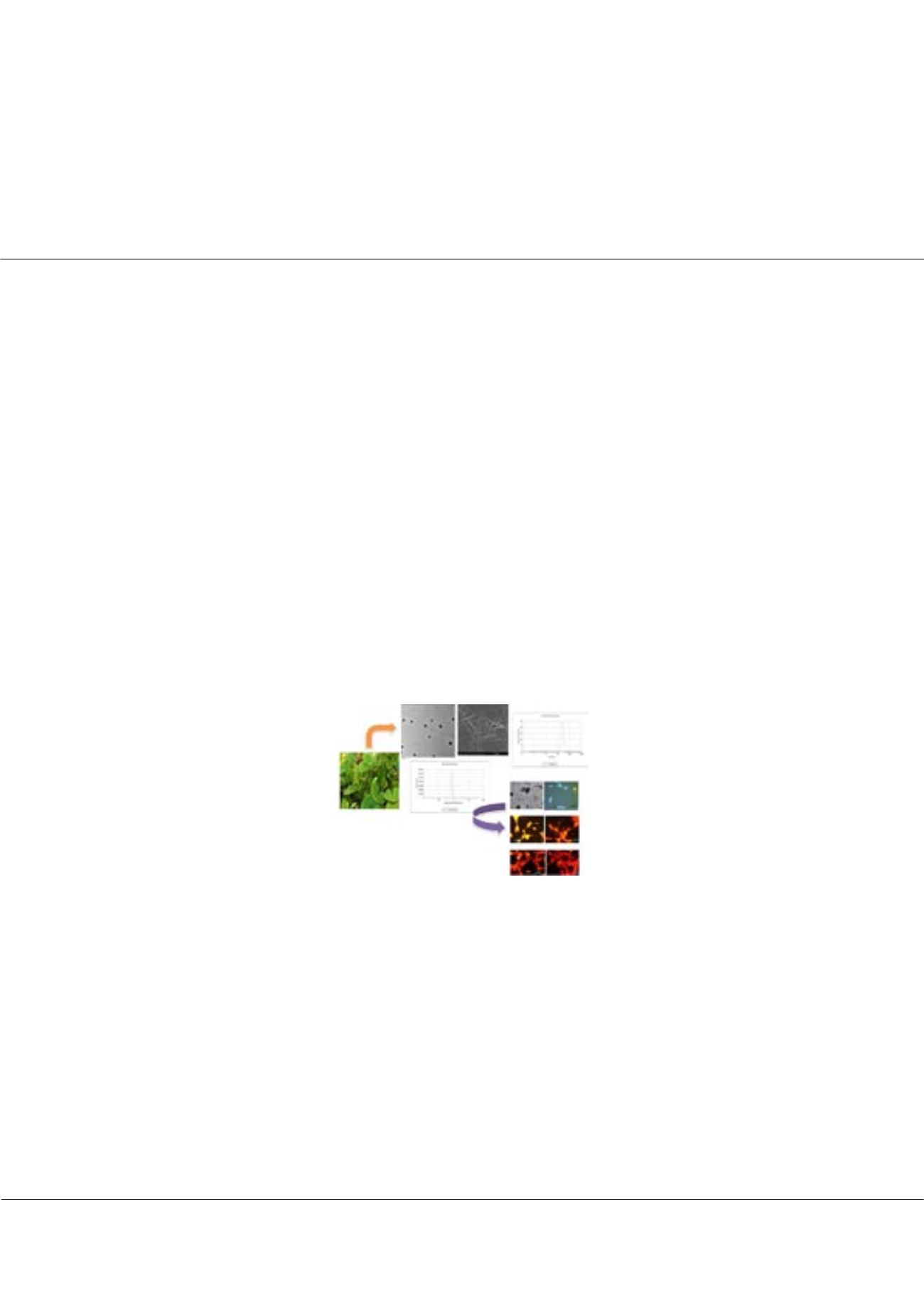

Page 91
conferenceseries
.com
Volume 6
Research & Reviews: Journal of Material Sciences
ISSN: 2321-6212
Advanced Materials 2018
September 04-06, 2018
September 04-06, 2018 | Zürich, Switzerland
21
st
International Conference on
Advanced Materials & Nanotechnology
Chitosan asiaticoside nanoparticles synthesized from
Centella asiatica
for glioma therapy
V Gayathri, Renju K
and
Sabulal Baby
Jawaharlal Nehru Tropical Botanic Garden and Research Institute, India
C
entella asiatica
is a high value medicinal plant widely distributed in the tropical and sub-tropical regions. The main active
principles are asiaticoside and madecassoside. Both these compounds have wide spectrum of biological activities. The
plant is famous in the label of memory booster and it shows neuropharmacological activity. The brain targeted delivery of
a drug is very challenging. Previous studies have shown that the penetrability of drug inside the brain is limited due to the
presence of defensive mechanism of brain. Free diffusion transposition through the interstitium of the brain is restricted
by complex anatomy of blood brain barrier (BBB). The poor solubility and low penetrability of a drug into the brain is the
major drawback in the neuropharmacology related studies. To overcome these limitations nanovehicles were used. To enhance
the permeability of a drug into the site of action was performed using nano delivery systems were developed. The brain
permeability is a risk factor for a drug to exhibit therapeutic effects at a target site. The main objective of our study focuses on
the development of a novel drug-based nanoparticle for the effective brain targeted delivery. Ionic gelation method was used for
the encapsulation of asiaticoside into the chitosan alginate nanoparticle. Physicochemical and Biological characterization: The
physical and chemical characterization study was done by Fourier transform infrared (FTIR), size distribution measurements
using dynamic light scattering (DLS), surface morphology by scanning electron microscopy, internal structure by transmission
electron microscopy and nature of the particle were analyzed by X-ray diffraction. The thermal characteristics were studied
using thermo gravimetric analysis (TGA), differential scanning calorimetry (DSC) and differential thermal analysis (DTA).
Interfacing the nanoparticles with glioma cells showed significant death of the cells. The work concludes that Chitosan
asiaticoside nanoparticles are potential remedy for the second level treatment of glioma.
Recent Publications:
1. Viswanathan Gayathri, Varma Harikrishnan and Parayanthala Valappil Mohanan (2016) Integration of rabbit
adipose derived mesenchymal stem cells to hydroxyapatite burr hole button device for bone interface regeneration.
International Journal of Biomaterials;
ID 1067857: 9.
doi.org/10.1155/2016/1067857.2. Gayathri V and Mohanan P V (2015) Induction of immunotoxicity and oxidative stress of imidazole on immune cells.
Applied Cell Biology;
4(2): 045-055.
Biography
V Gayathri is a Senior Scientist at Phytochemistry and Phytopharmacology Division of Jawaharlal Nehru Tropical Botanic Garden and Research Institute,
Thiruvananthapuram, Kerala, India. She has obtained her Bachelors’ and Masters’ in Biochemistry from Bharathidasan University, Tamil Nadu, India. She has obtained
her PhD from Jawaharlal Nehru Tropical Botanic Garden and Research Institute (formerly Tropical Botanical Garden and Research Institute) and Rajiv Gandhi
Centre for Biotechnology, Trivandrum, India. She has been engaged in various research activities as Post-Doctoral Fellow in Nano- Material Chemistry at Biomedical
Technology, Sree Chitra Tirunal Institute for Medical Sciences and Technology, India. Her field of expertise includes toxicological profiling of various materials/drugs/
nanoparticles on various cell types and tissue engineering with several bio materials. She has 10 years of experience in the field of nano material chemistry and
toxicology and her area of specialization is green nano chemistry. She has 20 research papers to her credit in peer reviewed journals.
gayathrieaswer@gmail.comV Gayathri et al., Res. Rev. J Mat. Sci. 2018, Volume 6
DOI: 10.4172/2321-6212-C3-020
















